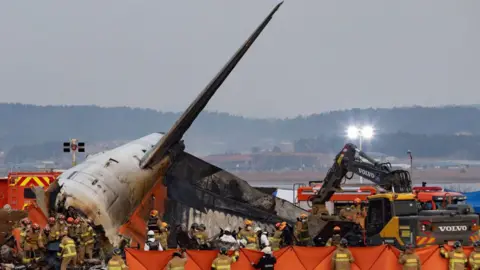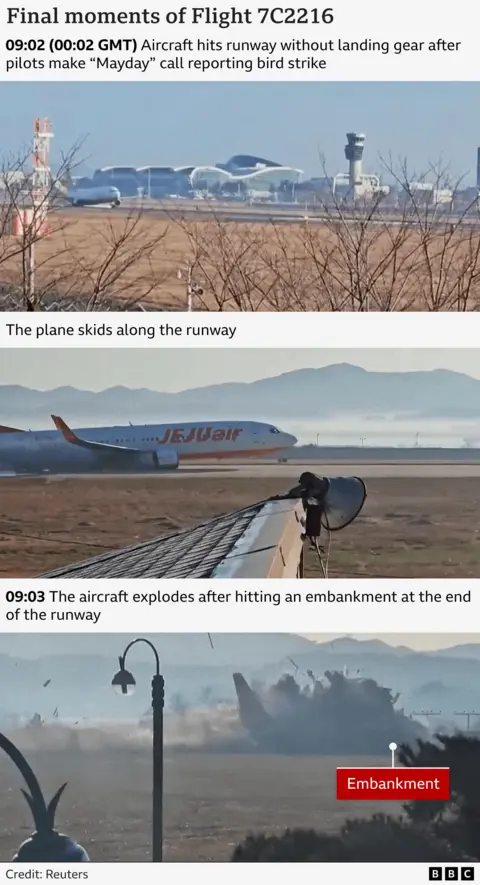 Getty Pictures
Getty PicturesAll South Korean airports might want to set up chook detection cameras and thermal imaging radars, after an air crash in December final yr killed 179 folks.
The rollout is about to occur in 2026.
Investigators mentioned final week that they’d discovered proof of a chook strike on the Boeing 737-800 airplane – with feathers and blood stains discovered on each the airplane’s engines.
An investigation into the crash – the deadliest on South Korean soil – remains to be ongoing however will concentrate on the function of the chook strike in addition to a concrete construction on the finish of the runway, which the airplane slammed into after making an emergency touchdown.
“Chicken detection radars can be put in in any respect airports to reinforce early detection of distant birds and enhance response capabilities for plane,” mentioned the Ministry of Land in an announcement on Thursday.
Chicken detection radar detects the dimensions of birds and their motion paths and relays this data to air visitors controllers.
The ministry added that every one airports would additionally must be geared up with at the very least one thermal imaging digicam.
Presently solely 4 airports in South Korea are geared up with thermal imaging cameras. It’s unclear if any of them have chook detection radars in place.
Websites that entice birds, like garbage dumps, should even be moved away from airports.
Earlier final month, South Korea introduced that seven airports would have their runway security areas tailored following a overview of all of the nation’s airports that was carried out after the crash.
The reason for the crash remains to be unknown however air security consultants had earlier mentioned the variety of casualties may have been a lot decrease if not for the construction that the airplane crashed into after making an emergency touchdown.
On 29 December, the airplane, from funds airline Jeju Air, had taken off from Bangkok and was flying to Muan Worldwide Airport within the nation’s south-west.
At about 08:57 native time, three minutes after pilots made contact with the airport, the management tower suggested the crew to be cautious of “chook exercise”.
At 08:59, the pilot reported that the airplane had struck a chook and declared a mayday sign.
The pilot then requested permission to land from the wrong way, throughout which it belly-landed with out its touchdown gear deployed. It overran the runway and exploded after slamming into the concrete construction, a preliminary investigation report concluded.
Flight knowledge and cockpit voice recorders stopped recording 4 minutes earlier than the catastrophe, an investigation into the black packing containers later discovered.
The 179 passengers onboard the Boeing B737-800 airplane had been aged between three and 78 years previous, though most had been of their 40s, 50s and 60s. Two cabin crew members had been the one survivors.


